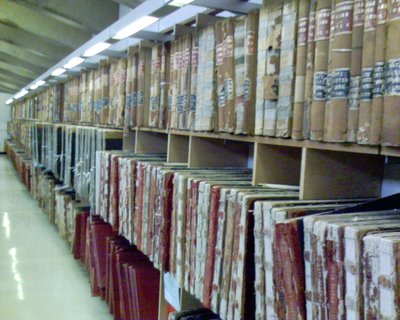A Guide to Tracing Your Family History in the Somerset Record Office Anglican registers of baptism, marriage and burial were ordered to be kept in 1538, although only 21 parishes in Somerset have registers preserved from so early a date. The Record Office holds registers for nearly all of Somerset's ancient parishes, as well as for some 60 Anglican churches founded in the 19th and 20th centuries. Churches which have deposited earlier registers retain those still in use, which can date from as far back as 1813 (baptisms or burials) and 1837 (marriages), particularly in the case of small parishes. Where registers still in parish custody need to be consulted the incumbent's name, address and telephone number can be found in the current edition of the Diocesan Directory, available at the Record Office.
The marriage registers of 103 Somerset parishes, usually up to 1812, have been published in Phillimore's Somerset Marriages (15 vols) and a slip index to these by surname is available in the office.
We also hold register transcripts in whole or part for many parishes. These and other original and copy holdings are listed in the Summary List, available for purchase.
Dr Campbell's Index to baptisms and marriages (before 1900 and excluding marriage registers published by Phillimore) is available for parishes to the west of the Quantocks and in the south of the county.
It can be consulted on microfiche in the microform searchroom, as can virtually all parish registers prior to 1885 and in most cases prior to 1900. In order to save wear and tear, original registers are only produced where the legibility of fiche is poor.
Transcripts of variable accuracy are held for some parishes and are noted in the Summary List.
. . . .
The law of Settlement and Removal, 1662, required that when members of the poorer classes moved into a parish they should bring with them a settlement certificate (or indemnity certificate) from the parish in which they were settled. If they failed to do this or became a financial burden on the parish in which they had arrived they could be moved back again by means of a removal order.
To determine which was their parish of settlement such paupers were questioned and a detailed statement of their life history to date, a settlement examination, was written down.
These three classes of document survive from the late 17th century and are of great help when tracing movements of individuals before the census returns, as well as including details of great human interest.
It must be added, however, that many Somerset parishes, particularly the small ones, have no surviving settlement papers: others, such as Wells St Cuthbert and Shepton Mallet, have them in profusion.
For the illegitimate children of paupers there are also bastardy examinations, bastardy bonds (executed by the putative father), and bastardy orders. These documents are of particular value when the identity of the natural father is not indicated in other sources such as the parish registers.
A name index to settlement and bastardy papers is available, and a selection of such documents is printed in extenso in Thelma Munckton's Somerset Paupers: Unremembered Lives (1994).
Apprenticeship indentures for pauper children apprenticed by parish officers also survive from the 17th century up to 1836. An index is in progress. These are the principal parish sources likely to interest family historians, but details of other types of parish documents will be found in W. E. Tate's The Parish Chest.
 to H M Coroner from informant Albert A Lucas, Resident Surgical Officer, Birmingham General Hospital
to H M Coroner from informant Albert A Lucas, Resident Surgical Officer, Birmingham General Hospital  to the Police from the Coroner
to the Police from the Coroner detail of jurors' names and addresses from the above image and rotated
detail of jurors' names and addresses from the above image and rotated  on the back - who witnessed at the court
on the back - who witnessed at the court verdict of the cause of death - ACCIDENTLY came to his death and not otherwise, with the signatures of 12 jurors
verdict of the cause of death - ACCIDENTLY came to his death and not otherwise, with the signatures of 12 jurors memorandum sent by Police Sergeant Farmer to HM Coroner
memorandum sent by Police Sergeant Farmer to HM Coroner Cornelius Alfred McGuire witness and Frank Lewis
Cornelius Alfred McGuire witness and Frank Lewis continuing Frank Lewis, the driver of the horse and trap
continuing Frank Lewis, the driver of the horse and trap I think that it will be another act of corporate vandalism to demolish this library and archives building
I think that it will be another act of corporate vandalism to demolish this library and archives building Rate books on open shelves of Bimingham city archive
Rate books on open shelves of Bimingham city archive


